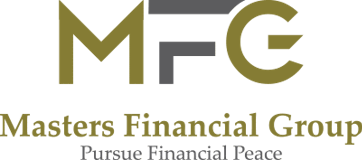Whether you are brand new to investing and have never had an annual review, or you’ve had many annual reviews, you might be interested to find out a little bit more of what is done during the review process.
The first step is obviously to see how your portfolio has performed in the past 12 months, as well as how you have invested through the year. How the portfolio performed is viewed differently based upon what stage in your retirement journey you are at.
If you’re accumulating, then Dave Ramsey recommends you are contributing 15% of your income. If you’ve fallen short this year, then examine what has caused the discrepancy. Things will come up each year to cause our savings to get off track, however, the most important thing is that you are saving! Then, we need to verify you are taking full advantage of your employer’s retirement plan, if your employer offers a contribution match, there is no reason you should not be obtaining these “free funds”.
If you’re close to retirement or have already begun withdrawing, the key factor to examine is if your withdrawal rate will allow you to outlive your money. During this time, we also need to ensure that your portfolio is being adjusted based on age and retirement horizon. Portfolio performance for those in retirement is typically more of a focus as opposed to young investors. This is when we need to ensure that your decrease in value is less than the market has decreased in a down year, as well as to make sure you feel safe in how your portfolio is constructed.
The next step is to examine how your portfolio is allocated. A young investor’s portfolio is much more heavily weighted with stocks as opposed to those approaching retirement. Why? Well, most people have a hard time watching their money fluctuate when they know they need it soon or are currently using the funds. Young investors are accumulating as many shares as possible, knowing they have a long road ahead and they will take advantage of changing stock prices via dollar cost averaging. Seasoned investors have more bonds, CDs, cash, and cash equivalents to avoid as much volatility and market risk as possible, while still increasing their portfolio value to keep up their purchasing power.
Your liquidity needs are then analyzed in order to free up money if needed. Bonds and CDs are great if they are not all tied up for the same amount of time, leaving you unable to access your money without incurring a fee or loss of capital due to selling prior to maturity. Therefore, we recommend staggering maturity dates of investments to ensure a “revolving door” of cash is always opening. We recommend at least a year of expected withdrawals in cash investments to ensure the investor has cash if needed.
Holdings are then examined to align with your goals.
Toward the end of the year, usually around October or November, we attend to tax matters. If the market has had a bad year…like 2022, then tax loss harvesting can be completed within non-retirement accounts. As the end of the year approaches, please be sure to maximize your tax-sheltered contributions (if you’re able to). This means if you can contribute another $200 to your plan to reach the maximum contribution for the year, you should!
Are you approaching RMD age (70 ½)? You might be interested in obtaining an estimate of what your RMD may be, here is a tool which utilizes the IRS life expectancy guide and your balance from the previous December 31st.
Required minimum distributions (RMDs) are calculated on your portfolio balance on 31 December of the previous year.
Did you know that if you do not satisfy your RMD the IRS can issue a fine of 50% on the difference between what your RMD was and what you withdrew?
There are so many more tasks that are involved in completing your annual portfolio review, and if you’d like to talk further about it, let Dave or me know by scheduling a call or visit!
Merry Christmas everyone!

